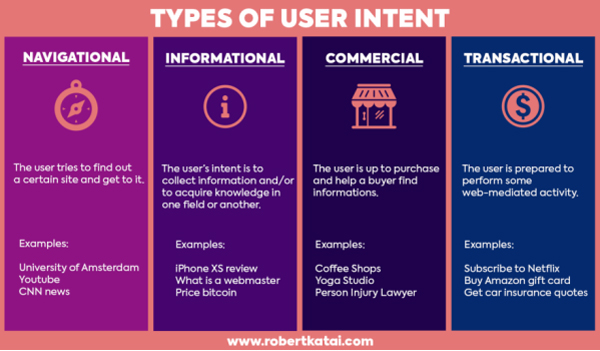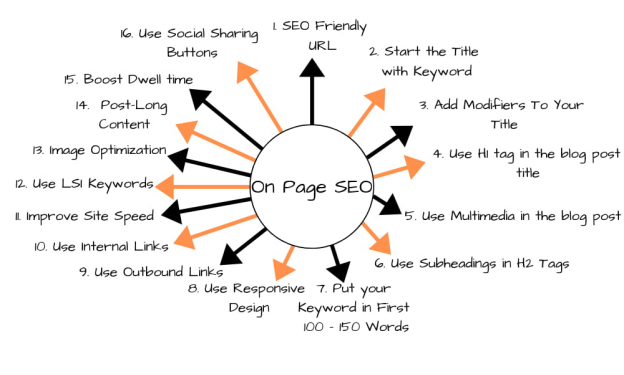Unlock the secret to dominating search engines with a complete SEO overhaul tailored specifically for dental websites. Don’t miss out!

Image courtesy of via DALL-E 3
Table of Contents
Are you wondering how to attract more visitors to your dental website? Well, you’re in the right place! In this guide, we will explore the world of SEO and how it can help overhaul your dental website to reach more potential patients. SEO stands for Search Engine Optimization, and it’s a powerful tool that can make your website more visible on the internet. Good SEO practices can lead to your dental practice appearing higher in search engine results, making it easier for people to find you. Let’s dive in and discover how you can improve your dental website with the magic of SEO!
What is SEO?
SEO, or Search Engine Optimization, is like a secret code that helps your website show up when people search for dental services online. It’s all about using the right words and phrases on your website so that search engines like Google can easily find and show your site to people looking for dental services. Imagine it as a special key that unlocks the door to your website for potential patients.
Why is SEO Important for Dentists?
For dentists, having good SEO is like having a bright sign that attracts patients to your practice. When your website appears at the top of search results, more people are likely to click on it and learn about your services. This can lead to an increase in appointments and help grow your dental practice. With the right SEO strategies, you can reach a larger audience and connect with new patients who are actively seeking dental care.
Overview of the Guide
In this guide, we will cover everything you need to know to give your dental website an SEO makeover. We’ll start by understanding keywords and how they play a crucial role in SEO. Then, we’ll explore how to create high-quality content that engages visitors and keeps them coming back for more. Additionally, we’ll delve into optimizing on-page elements, building backlinks, and harnessing the power of local SEO to attract nearby patients. We’ll also share some technical SEO tips to improve your website’s performance and discuss how to monitor and analyze your SEO efforts for continuous improvement. Let’s embark on this SEO journey together and transform your dental website into a magnet for potential patients!
Understanding Keywords
What are Keywords?
Keywords are words and phrases that people type into search engines like Google when they are looking for something specific. For example, if you’re searching for information about getting your teeth cleaned, you might type in “dental cleaning.” In this case, “dental cleaning” is the keyword that helps the search engine understand what you’re looking for.
Finding the Right Keywords
To attract more visitors to a dental website, it’s important to use keywords that are relevant to the services offered. One way to find the right keywords is by using tools like Google Keyword Planner. This tool helps identify popular search terms related to dental services, allowing website owners to choose the best keywords to target.
Using Keywords Effectively
Once you have identified the right keywords, it’s important to use them strategically on your website. Keywords should be included in the titles of web pages, URLs, and within the content itself. By strategically placing keywords throughout the website, search engines can better understand the relevance of the site to user queries, ultimately improving its visibility in search results.
Creating High-Quality Content
When it comes to attracting visitors to a dental website, creating different types of content is key. Blog posts, videos, and infographics are all great ways to engage with potential patients and provide them with valuable information about dental services and oral health.
Writing for Your Audience
It’s important to write content on your dental website that is easy for your patients to understand. Avoid using jargon or complex medical terms that might confuse them. Instead, focus on providing clear, concise information that is both informative and engaging.
Keeping Content Updated
Regularly updating the content on your dental website is essential to keep it fresh, relevant, and appealing to visitors. By adding new blog posts, updating service pages, and sharing the latest information about oral health, you can show your audience that you are knowledgeable and up-to-date in your field.
Optimizing On-Page Elements
Title tags and meta descriptions are important parts of a webpage that can greatly impact its SEO performance. The title tag is the title of a webpage that appears on search engine results pages, while the meta description is a brief summary of the content on the page. When writing title tags and meta descriptions, it’s crucial to include relevant keywords that accurately describe the webpage’s content. This helps search engines understand what the page is about and improves its visibility to potential visitors.

Image courtesy of via Google Images
Using Header Tags
Header tags, such as H1, H2, and H3, are used to structure the content on a webpage. Search engines use these tags to understand the hierarchy of information on a page. The H1 tag is typically used for the main heading of the page, while H2 and H3 tags are used for subheadings. By organizing content with header tags, you can improve the readability and SEO of your webpage. Make sure to include relevant keywords in your header tags to further optimize your page for search engines.
Optimizing Images
Images play an important role in engaging visitors and enhancing the user experience of a webpage. To optimize images for SEO, it’s essential to use descriptive file names and alt text that include relevant keywords. This helps search engines understand the content of the image and can improve the overall SEO performance of the webpage. Additionally, optimizing image file sizes can help improve the loading speed of the webpage, which is another crucial factor for SEO.
Building Backlinks
Backlinks are like votes of confidence for your website. They are links from other websites that direct users to your site. Think of them as recommendations from other sites saying, “Hey, this website is great, check it out!”
Getting Backlinks from Other Sites
To earn backlinks, you can reach out to other websites in your industry and ask if they would be willing to link to your content. Another way is through guest posting, where you write an article for another website in exchange for a backlink to your site. Collaborating with influencers or industry experts can also help you gain quality backlinks.
Quality Over Quantity
It’s essential to focus on getting backlinks from reputable and authoritative websites in your field. One high-quality backlink from a well-known site can be more valuable for your SEO than several low-quality backlinks from less reputable sources. Quality backlinks not only drive traffic to your site but also boost your credibility and authority in the eyes of search engines.
Local SEO for Dentists
In today’s digital age, having a strong online presence is crucial for dentists to attract new patients. Local SEO, or Search Engine Optimization, is a powerful tool that can help dentists improve their visibility in local search results and connect with nearby patients. Let’s dive into how dentists can optimize their websites for local SEO to reach more individuals in their community.

Image courtesy of via Google Images
What is Local SEO?
Local SEO is a strategy that focuses on enhancing a website’s visibility to people who are searching for services or businesses in their local area. By utilizing local SEO techniques, dentists can increase their chances of appearing in local search results when potential patients are looking for dental services nearby.
Setting Up Google My Business
One of the most effective ways for dentists to improve their local SEO is by creating and optimizing a Google My Business profile. This free tool from Google allows businesses to manage their online presence and appear in Google Maps and local search results. Dentists can provide essential information such as their office hours, contact details, and address, making it easier for patients to find and contact them.
Getting Reviews
Online reviews play a significant role in local SEO for dentists. Positive reviews not only build trust with potential patients but also signal to search engines that the dental practice is reputable and provides quality service. Encouraging satisfied patients to leave reviews on platforms like Google My Business, Yelp, or Healthgrades can boost the practice’s online visibility and attract more local patients.
Technical SEO Tips
A fast website is crucial for attracting visitors and keeping them engaged. Websites that load quickly are more likely to rank higher in search results. To improve your website speed, optimize images by reducing file sizes, enable browser caching to store website data for quicker access, and minimize the use of plugins that can slow down loading times.
Making Your Site Mobile-Friendly
With the increasing use of mobile devices, it’s essential to ensure that your website is responsive and looks good on smartphones and tablets. A mobile-friendly site provides a better user experience, leading to higher rankings on search engines. Make sure your site’s design adapts to different screen sizes and test its functionality on various mobile devices.
Ensuring Proper Site Structure
A well-organized site structure not only helps visitors navigate your website easily but also improves SEO. Make sure your content is logically arranged with clear categories and subcategories. Use descriptive URLs and internal linking to guide users and search engine crawlers through your site. Proper site structure enhances user experience and boosts your site’s visibility in search results.
Monitoring and Analyzing SEO Performance
In order to ensure that your dental website is performing well in search engine results and attracting potential patients, it is essential to monitor and analyze its SEO performance regularly. By keeping track of key metrics and making necessary adjustments, you can improve your site’s visibility and reach. Here’s how you can effectively monitor and analyze your SEO performance:

Image courtesy of via Google Images
Using Analytics Tools
One of the most powerful tools for monitoring SEO performance is Google Analytics. This free tool provides valuable insights into how users interact with your website, which pages are most popular, where your traffic is coming from, and much more. By setting up Google Analytics on your site, you can track the effectiveness of your SEO efforts and make data-driven decisions to improve your site’s performance.
What to Monitor
When analyzing your SEO performance, it’s important to keep an eye on key metrics such as website traffic, bounce rate, and conversion rate. Website traffic refers to the number of visitors coming to your site, while the bounce rate measures the percentage of visitors who leave after viewing only one page. The conversion rate indicates how many visitors take a specific action on your site, such as booking an appointment or contacting your practice. By monitoring these metrics, you can gain valuable insights into the effectiveness of your SEO strategies.
Making Improvements
After analyzing the data from your SEO performance, it’s crucial to make continuous improvements to your website. Use the insights gathered from analytics to identify areas for enhancement, such as optimizing underperforming pages, refining keyword strategy, or improving website usability. By making incremental changes based on data-driven decisions, you can refine your SEO tactics and ensure that your dental website stays competitive in search engine rankings.
Conclusion
In conclusion, SEO is a vital tool for improving the visibility of dental websites and attracting more potential patients. By following the strategies outlined in this guide, dental practices can optimize their websites to rank higher in search results and increase traffic.
Recap of Key Points
We covered various aspects of SEO, from understanding keywords and creating high-quality content to optimizing on-page elements and building backlinks. Additionally, we discussed the importance of local SEO, technical SEO tips, and monitoring SEO performance with analytics tools.
Importance of Ongoing Efforts
It is crucial to remember that SEO is an ongoing process that requires continuous attention and updates. Success in SEO is not achieved overnight but through persistent efforts and staying updated with the latest trends and algorithms.
Want to turn these SEO insights into real results? Seorocket is an all-in-one AI SEO solution that uses the power of AI to analyze your competition and craft high-ranking content.
Seorocket offers a suite of powerful tools, including a Keyword Researcher to find the most profitable keywords, an AI Writer to generate unique and Google-friendly content, and an Automatic Publisher to schedule and publish your content directly to your website. Plus, you’ll get real-time performance tracking so you can see exactly what’s working and make adjustments as needed.
Stop just reading about SEO – take action with Seorocket and skyrocket your search rankings today. Sign up for a free trial and see the difference Seorocket can make for your website!
FAQs
What is the Best Way to Get Started with SEO?
When you’re ready to boost your dental website’s visibility, start by researching relevant keywords that potential patients might use to find services like yours. Next, optimize your website by strategically placing these keywords in your content, headings, and meta descriptions. Creating high-quality, engaging content and regularly updating it will also help attract visitors. Additionally, consider optimizing technical aspects like site speed and mobile-friendliness to enhance user experience and SEO performance.
How Long Does it Take to See SEO Results?
SEO is a gradual process, and results can vary depending on various factors such as competition, website age, and the quality of your SEO efforts. Typically, improvements in search engine rankings and website traffic can be noticed within a few months of implementing SEO strategies. It’s important to be patient and consistent with your optimization efforts to see sustained results over time.
Can I Do SEO on My Own?
While it’s possible to handle SEO for your dental website on your own, it can be a complex and time-consuming task. If you have the time and willingness to learn, you can educate yourself on best practices and implement basic SEO strategies. However, for more advanced optimization techniques and to ensure maximum effectiveness, you may want to consider hiring an experienced SEO professional or agency. They can provide expert guidance and help you achieve optimal results for your website.







